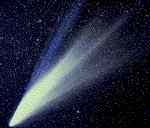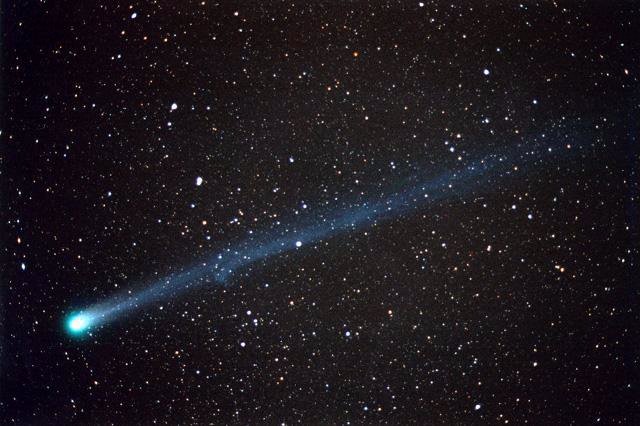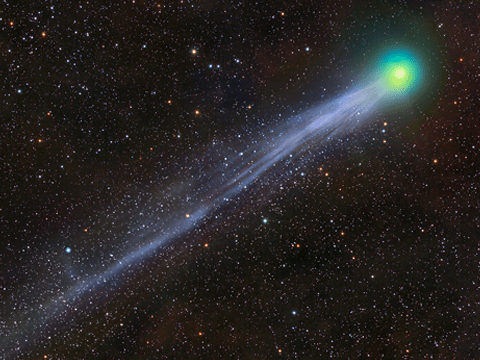Unlike the other small bodies in the solar system, comets have been known since antiquity. There are Chinese records of Comet Halley going back to at least 240 BC. The famous Bayeux Tapestry, which commemorates the Norman Conquest of England in 1066, depicts an apparition of Comet Halley.
Comet History
As of 1995, 878 comets have been cataloged and their orbits at least roughly calculated. Of these 184 are periodic comets (orbital periods less than 200 years); some of the remainder are no doubt periodic as well, but their orbits have not been determined with sufficient accuracy to tell for sure.
Comets are sometimes called dirty snowballs or "icy mudballs". They are a mixture of ices (both water and frozen gases) and dust that for some reason didn't get incorporated into planets when the solar system was formed. This makes them very interesting as samples of the early history of the solar system.

Comets are invisible except when they are near the Sun. Most comets have highly eccentric orbits which take them far beyond the orbit of Pluto; these are seen once and then disappear for millennia. Only the short- and intermediate-period comets (like Comet Halley), stay within the orbit of Pluto for a significant fraction of their orbits.

After 500 or so passes near the Sun off most of a comet's ice and gas is lost leaving a rocky object very much like an asteroid in appearance. (Perhaps half of the near-Earth asteroids may be "dead" comets.) A comet whose orbit takes it near the Sun is also likely to either impact one of the planets or the Sun or to be ejected out of the solar system by a close encounter (esp. with Jupiter).

Meteor shower sometimes occur when the Earth passes thru the orbit of a comet. Some occur with great regularity: the Perseid meteor shower occurs every year between August 9 and 13 when the Earth passes thru the orbit of Comet Swift-Tuttle. Comet Halley is the source of the Orionid shower in October.
Picture of Comets












